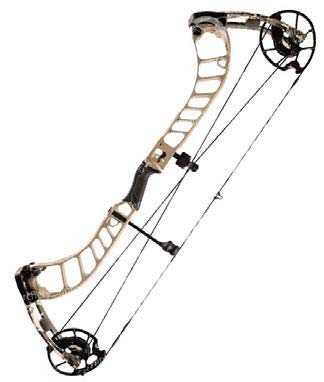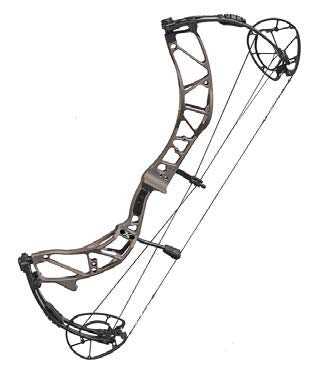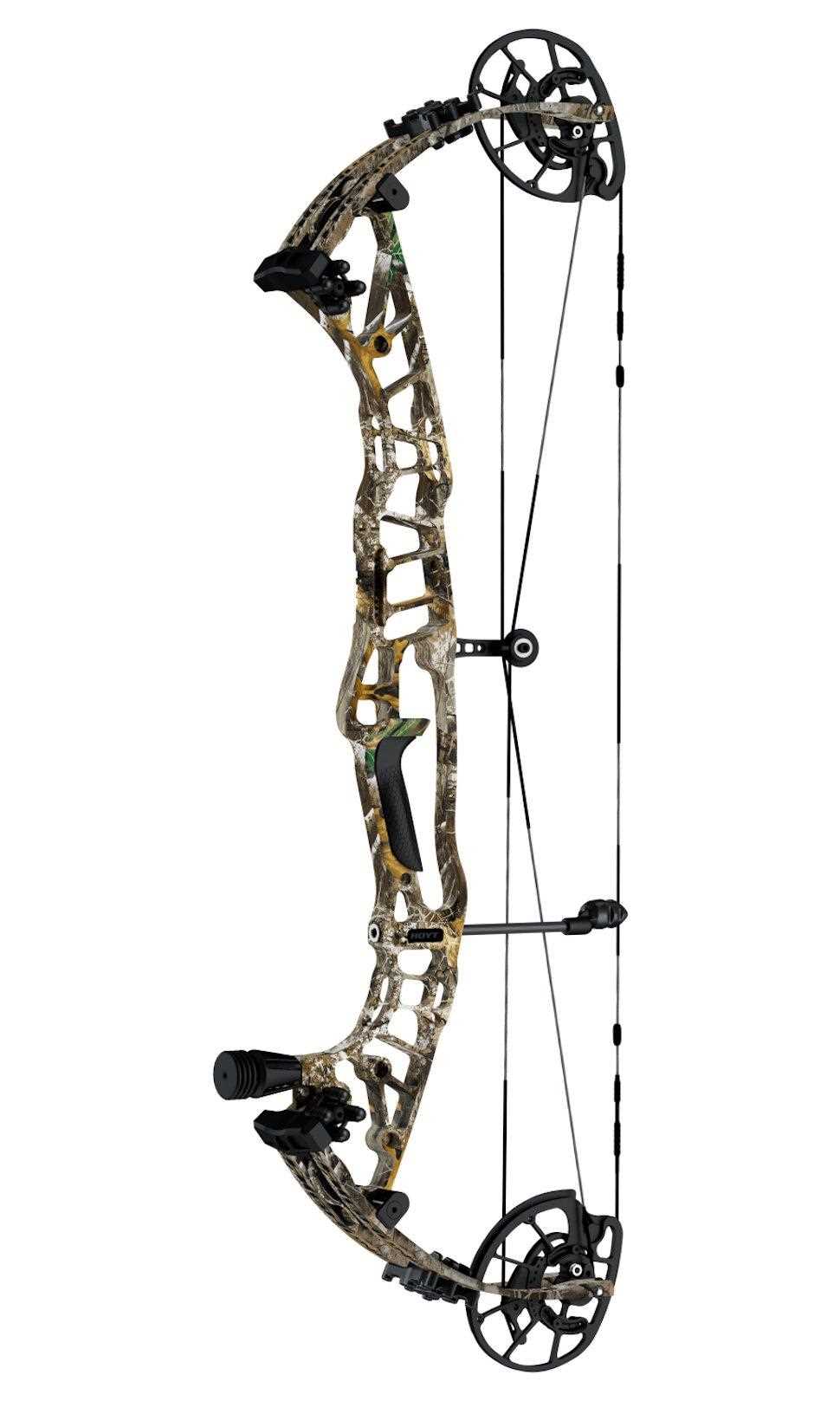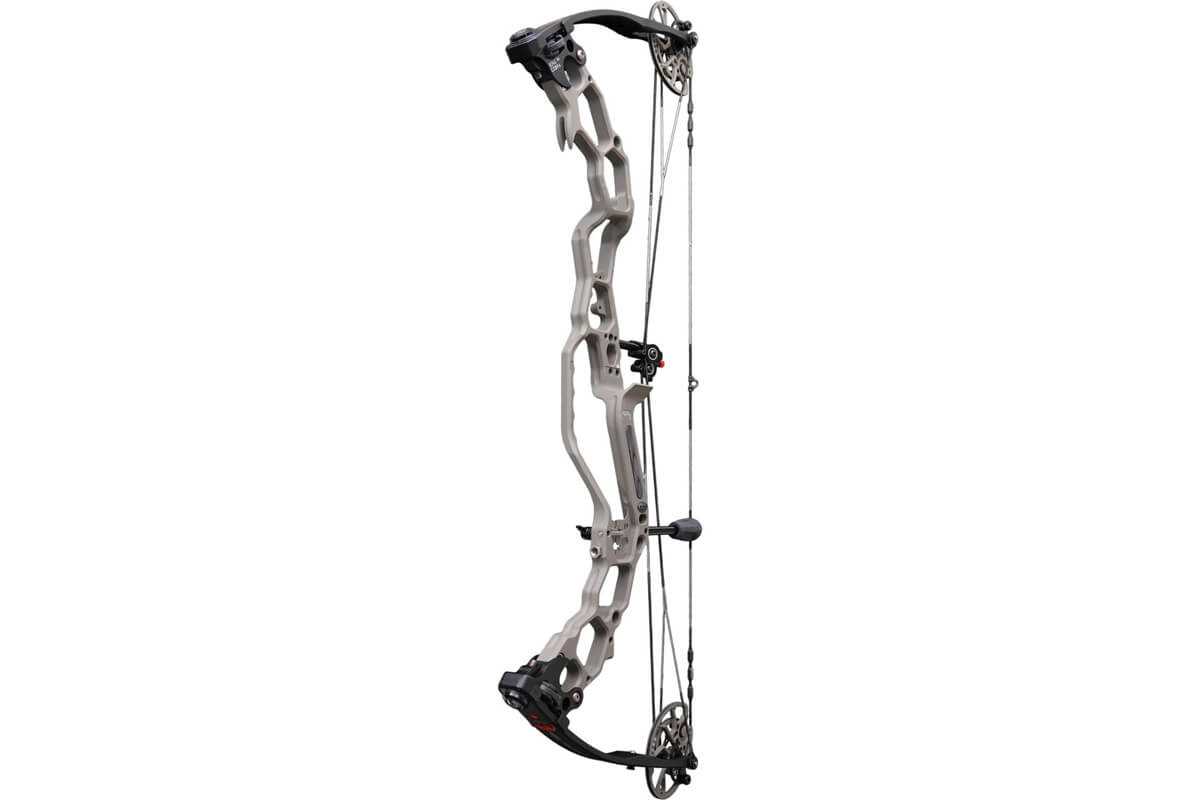Contents
Unveiling the Swiftest Bow Available: An In-Depth Guide to Finding the Fastest Bow on the Market

If you are a true archery enthusiast or a beginner looking to take up the sport, finding the right bow is crucial for your success. With so many options available on the market, it can be overwhelming to choose the perfect bow for your needs. However, if speed is what you’re after, look no further: we present to you the fastest bow on the market.
When it comes to archery, speed is often a top priority for many bowhunters and competitive archers. The faster the arrow, the better chance it has of hitting the target accurately and with more force. With advancements in bow technology, manufacturers have been able to design and produce bows that shoot arrows at incredible speeds.
Introducing the newest addition to the world of archery: the fastest bow on the market. This bow is engineered with cutting-edge technology and state-of-the-art materials to ensure maximum speed and performance. Every aspect of the bow, from its limbs to the cams and strings, has been meticulously designed to deliver unparalleled speed without compromising on accuracy.
But what sets this bow apart from the rest? One key feature is the incorporation of high-performance limbs that store a tremendous amount of energy upon drawing. Combined with a highly efficient cam system that eliminates any unnecessary vibrations and noise, this bow guarantees an incredibly quick arrow release with minimal hand shock.
Whether you are a seasoned archer or just starting out, choosing the right bow is essential to your success. The fastest bow on the market offers an unrivaled combination of speed, power, and accuracy. So, get ready to take your archery game to the next level and unleash the power of the fastest bow on the market!
What Makes a Bow Fast?
When it comes to finding the fastest bow on the market, there are several key factors to consider. These factors can greatly impact the speed and performance of a bow, and understanding them can help you make an informed decision when choosing a bow for your needs.
One of the most important factors that contribute to a bow’s speed is its draw weight. A higher draw weight means that the bow requires more force to pull back the string, resulting in a faster arrow speed. However, it’s important to note that a bow with a high draw weight may not be suitable for everyone, as it requires more strength to shoot effectively.
Another factor that affects the speed of a bow is its axle-to-axle length. Generally, shorter bows tend to be faster than longer bows. This is because a shorter bow has a shorter power stroke, which allows for a quicker release of energy. However, shorter bows may also be less forgiving and harder to shoot accurately, so it’s important to find the right balance between speed and accuracy.
The design and construction of the bow also play a significant role in its speed. Bows with efficient cam systems, such as binary or hybrid cams, are able to generate higher arrow speeds. Additionally, lightweight materials like carbon fiber or aluminum can contribute to a faster bow by reducing the overall weight and increasing the efficiency of the bow’s limbs.
Finally, the arrow you choose to shoot can also impact the speed of your bow. Lighter arrows typically travel faster than heavier arrows, as they require less force to propel forward. However, it’s important to find the right arrow weight for your bow, as shooting arrows that are too light can result in decreased accuracy and stability.
- Draw weight: Higher draw weight contributes to faster arrow speed.
- Axle-to-axle length: Shorter bows tend to be faster, but may sacrifice accuracy.
- Cam system: Efficient cam systems generate higher arrow speeds.
- Materials: Lightweight materials like carbon fiber or aluminum increase the bow’s speed.
- Arrow weight: Lighter arrows travel faster, but finding the right weight is important for accuracy and stability.
By considering these factors, you can find the bow that suits your needs and offers the fastest arrow speed on the market.
The Importance of Speed in Bowhunting

Bowhunting is a popular sport that requires skill, accuracy, and patience. One of the key factors that can greatly contribute to a successful hunt is the speed of your bow. In the market, there are various bows available, each with its own unique features. However, when it comes to bowhunting, speed plays a crucial role.
When a hunter takes aim at their target, they need to take into consideration the speed at which the arrow will reach its destination. This is important because the faster the arrow travels, the less time the animal has to react and move out of its trajectory. A fast bow allows for a quick and clean kill, minimizing the chances of a wounded animal escaping.
Furthermore, speed is vital when it comes to long-distance shots. Bowhunters may need to shoot at targets that are far away, and a fast bow can greatly increase the chances of hitting the target accurately. Whether it’s a deer, elk, or any other game, having a bow that can shoot at high speeds gives the hunter an advantage in terms of accuracy and range.
Another reason why speed is important in bowhunting is the impact it has on the arrow’s penetration. The faster the arrow travels, the deeper it can penetrate into the animal’s body. This is especially crucial when hunting larger game, as a deep and effective penetration is necessary to ensure a clean and ethical kill.
It’s worth noting that speed alone doesn’t guarantee success in bowhunting. Other factors, such as shot placement and the hunter’s skill, also play important roles. However, having a fast bow can significantly improve your chances of a successful hunt.
In conclusion, when considering a bow for bowhunting, it’s crucial to factor in speed. A fast bow can give you an advantage in terms of accuracy, range, and penetration. With the right combination of speed and skill, you can become a proficient bowhunter and enjoy a successful hunting experience.
Understanding Bow Speed
When it comes to choosing a bow, one of the most important factors to consider is the speed at which it shoots. In the competitive archery market, manufacturers are constantly striving to produce the fastest bows possible.
Bow speed refers to the velocity at which an arrow is propelled from the bow. The faster the arrow travels, the flatter its trajectory will be, making it easier to hit targets accurately at longer distances.
There are a few different ways to measure bow speed. One common method is to use a chronograph, which measures the arrow speed as it passes through a set distance. Another method is to calculate the speed based on the draw weight and arrow weight. The higher the draw weight and lighter the arrow, the faster the bow will shoot.
Choosing a bow with a high speed can be advantageous for a number of reasons. Firstly, it can increase your chances of hitting your target, particularly at longer distances. Secondly, it can give you a competitive edge in archery competitions. Finally, a faster bow can help compensate for imperfect form or releasing technique.
However, it’s important to note that speed isn’t the only factor to consider when choosing a bow. Factors such as accuracy, comfort, and ease of use should also be taken into account. It’s essential to try out different bows and find the one that suits your individual needs and preferences.
In conclusion, understanding bow speed is crucial when selecting the right bow for your needs. While the market offers a wide range of fast bows, it’s important to consider other factors as well. By finding the perfect balance between speed and other features, you can optimize your archery performance and achieve your goals.
How Bow Speed is Measured
Bow speed is a crucial factor to consider when choosing a bow for your archery needs. The speed of a bow refers to how fast an arrow can be launched from the bow. A faster bow can result in a flatter trajectory, improved accuracy, and greater distance.
There are various methods used to measure bow speed, but one of the most common ones is the use of an arrow chronograph. Essentially, an arrow chronograph is a device that measures the speed of an arrow as it passes through a designated point.
Typically, an arrow chronograph consists of two sensors placed at a specific distance apart. When an arrow passes through these sensors, it interrupts the beam of light between them. By measuring the time it takes for the arrow to travel between the sensors, the chronograph can calculate the speed of the arrow.
It’s worth noting that bow speed can be affected by various factors, including the draw weight and draw length of the bow, as well as the weight and type of arrow being used. Generally, bows with higher draw weights and longer draw lengths tend to generate greater speeds.
When comparing the speed of different bows, it’s crucial to consider not only the maximum speed but also the consistency of the speed across different arrow weights. Some bows may be faster with lighter arrows while others may perform better with heavier arrows.
In conclusion, measuring bow speed is essential when looking for the fastest bow on the market. Arrow chronographs provide an accurate and reliable method of measuring bow speed, allowing archers to make informed decisions when selecting a bow for their specific needs.
CAM Speed vs. Arrow Speed
CAM speed refers to the speed at which the bow’s cam system operates. The cam system is responsible for storing and releasing energy, which propels the arrow forward. A faster cam speed means that the bow can release energy more efficiently, resulting in a higher arrow speed.
On the other hand, arrow speed refers to the actual speed at which the arrow travels through the air. It is influenced by various factors, including the weight and length of the arrow, the amount of energy stored in the bow, and the efficiency of the bow’s cam system.
While a bow with a fast cam speed can help increase arrow speed, it’s important to note that arrow speed is not solely determined by cam speed. Other factors, such as the draw weight of the bow, the draw length, and the shooter’s technique also play a significant role in determining arrow speed.
When choosing the fastest bow on the market, it’s crucial to consider both CAM speed and arrow speed. A bow with a high cam speed can provide a good foundation for achieving high arrow speeds, but it also needs to be paired with the right arrows and shooting technique to achieve optimal performance.
In conclusion, while CAM speed and arrow speed are related, they are separate aspects of a bow’s performance. The fastest bow on the market will have a combination of a high cam speed, efficient energy transfer, and well-matched arrows to achieve the highest arrow speeds possible.
The Role of Bow Design in Speed

When it comes to finding the fastest bow on the market, one of the key factors to consider is the design of the bow itself. The way a bow is designed can greatly impact its speed and performance, making it an important aspect for archers to consider.
One of the main features of a bow that can affect its speed is the limb design. The limbs of a bow are the upper and lower parts that bend when the bowstring is drawn back. The efficiency of the limb design can determine how much energy is transferred to the arrow upon release, directly impacting the speed of the shot. Bows with limbs that are designed to store and release energy efficiently will generally be faster than those with less efficient limb designs.
Another important aspect of bow design that influences speed is the weight and balance of the bow. A heavier bow may generate more power, but it can also be slower to shoot. On the other hand, a lighter bow may be faster, but it may sacrifice some power. Finding the right balance between weight and speed is essential for archers looking for the fastest bow.
Additionally, the shape and length of the bow’s riser, which is the central part of the bow where the limbs are attached, can also impact speed. A well-designed riser can help reduce vibration and noise, which can affect accuracy, as well as allow for better control and stability. A stable and controlled shot can result in faster arrow speeds.
Finally, the type and quality of materials used in the construction of the bow can influence its speed. Bows made with lightweight and durable materials, such as carbon fiber or aluminum alloy, are typically faster than those made with heavier or less sturdy materials. The choice of materials can significantly affect the overall performance of a bow.
In conclusion, bow design plays a crucial role in determining the speed of a bow. Factors such as limb design, weight and balance, riser shape, and the materials used can all contribute to the overall speed and performance of a bow. When looking for the fastest bow on the market, it is important to consider these design aspects to make an informed decision.
Factors Affecting Arrow Speed

When it comes to determining the speed of an arrow, several factors come into play. These factors can greatly affect the performance of a bow in the market, as well as the overall shooting experience. Let’s take a look at some of these key factors:
| Factor | Description |
|---|---|
| Bow Draw Weight | The draw weight of a bow refers to the amount of force required to fully draw back the bowstring. A higher draw weight results in a more powerful shot and increased arrow speed. |
| Arrow Weight | The weight of the arrow itself also plays a significant role in determining its speed. Lighter arrows generally travel faster than heavier ones, as they require less force to propel. |
| Arrow Length | The length of the arrow can influence its speed as well. Shorter arrows tend to be faster due to their reduced surface area and decreased air resistance. |
| Bow Design | The design of the bow itself can have an impact on arrow speed. Modern bow designs, such as compound bows, often incorporate features like cams and pulleys to maximize energy transfer and increase arrow speed. |
| Bow String Material | The material used for the bowstring can affect the speed of the arrow. Strings made from high-performance materials, such as Fast Flight or BCY-X, are known for their minimal creep and stretch, resulting in faster arrow speeds. |
| Aim and Anchor Point | The way an archer aims and anchors the bow can impact arrow speed as well. Consistent and proper form, as well as a solid anchor point, can ensure optimal energy transfer from the bow to the arrow. |
By understanding these factors, archers can make informed decisions when selecting a bow and arrow setup that suits their needs. Whether you’re a competitive shooter or an enthusiast looking to improve their skills, considering these factors will help you achieve maximum arrow speed and performance on the market.
Tips for Choosing a Fast Bow

When it comes to archery, speed can make a significant difference in your performance and success. Choosing the fastest bow on the market can give you an edge over your competitors and improve your overall shooting experience. Here are some tips to help you choose the fastest bow that suits your needs:
- Consider your draw length: The draw length is the distance from your bow hand to your anchor point at full draw. To maximize the speed of your bow, make sure to choose a bow with the appropriate draw length for your body size and shooting style.
- Pay attention to draw weight: The draw weight is the amount of force required to fully draw the bowstring. A higher draw weight generally results in faster arrow speeds. However, it’s essential to choose a draw weight that you can comfortably handle and control.
- Look for lightweight materials: Bows made of lightweight materials like carbon fiber or aluminum alloys are generally faster than bows made of heavier materials. These materials allow for more efficient energy transfer and quicker arrow speeds.
- Consider the bow’s cam system: Different cam systems can affect the speed and performance of the bow. Single cam systems are known for their smoothness and ease of use, while hybrid cam systems offer a combination of speed and adjustability. Consider your shooting style and preferences when selecting a cam system.
- Test different bow models: Every bow model is unique, and their speeds can vary. Don’t hesitate to test out different bow models to find the one that suits you best in terms of speed, comfort, and overall shooting experience.
- Consult with an expert: If you’re unsure about which bow to choose or need assistance in finding the fastest bow for your needs, don’t hesitate to consult with an experienced archery expert. They can provide valuable insights and recommendations based on your skill level, goals, and budget.
By following these tips, you’ll be well on your way to finding and selecting the fastest bow that will enhance your archery skills and give you a competitive advantage in the field.
Consider Your Shooting Style
When selecting the fastest bow on the market, it is important to consider your shooting style. Different bows are designed for different types of shooting, so it is crucial to understand your preferences and needs.
If you are an archer who prefers a more traditional shooting style, you may want to consider a recurve bow. Recurve bows are known for their sleek design and smooth shooting experience. They can take some time to master, but once you get the hang of it, you can achieve impressive speed and accuracy.
On the other hand, if you are more of a modern shooter who likes to use accessories and attachments, a compound bow might be a better fit for you. Compound bows are equipped with pulleys and cables, which make it easier to draw and hold at full draw. This allows for a more consistent and powerful shot, making it an excellent choice for hunting or target shooting.
Regardless of your shooting style, it is crucial to select a bow that feels comfortable in your hand and suits your preferences. The fastest bow on the market is only beneficial if it complements your shooting technique. Take the time to try out different bows and consult with professionals to find the perfect match for you.
Remember: The fastest bow is not always the best choice for everyone. It is essential to consider your shooting style, experience level, and personal preferences when selecting a bow that will enhance your archery skills and overall shooting performance. So, take your time, explore your options, and make an informed decision to find the perfect bow for you.

A skilled hunter, dedicated conservationist, and advocate for ethical practices. Respected in the hunting community, he balances human activity with environmental preservation.
